 |
Sunday, April 27, 2025
A New Weapons System at Old Ur
Fred Winter - CAI
This presentation examines the practice of warfare in the Sumerian era and the changes that resulted by the development of new military technologies in the later third millennium BCE.
The lecture draws upon set of finds from Sir Leonard Woolley's excavations during the 1920s-1930s at the third millennium BCE site of Biblical Ur.
A reexamination of these artifacts from the excavations in Ur's Royal Cemetery led to the identification of a "new" set of projectile weapons, and illustrates how even established and venerable archaeological collections can lead to new interpretations of past behaviors.
This event will be held at Jerusalem Mediterranean Restaurant (3400 washington Drive / Falls Church / VA 22041.
Luncheon at 2 pm / Lecture at 3 pm
|
|
|
|
|
|
 |
Sunday, May 18, 2025
The Second Athenian Confederacy
Nicholas Cross
In 378 BCE, thirty-six years after their defeat in the Peloponnesian War and the dismantling of their empire, the Athenians took the bold step of reconstituting their hegemony over the Aegean world.
But contrary to the view that the Second Athenian Confederacy was an attempt to revive Athens’ imperial past, this new organization was a bold experiment in inclusive geopolitics. In its political, financial, and military institutions, the Confederacy differed from its fifth-century predecessor by allowing a greater role for the seventy allies under Athenian leadership.
This presentation will employ an innovative approach to understanding interstate relations in the late Classical period. Through an examination of literary and epigraphical evidence, it will explore the origins of the Second Athenian Confederacy, the mechanisms for its operations, and the reasons for its downfall between the 350s and 338 BCE.
Nicholas Cross is Assistant Professor of Ancient Mediterranean History at the United States Naval Academy.
This event will be held at Pistone's Italian Inn (6320 Arlington Blvd / Falls Church, VA 22042)
Luncheon at 2 pm / Lecture at 3 pm
|
|
|
|
 |
Tuesday, June 10, 2025 at 8 pm EST via Zoom
Hearing the Voices of the Dead in Ancient Israel
Elizabeth Bloch-Smith – Princeton Theological Seminary
“When someone tells you to consult mediums and spiritists, who whisper and mutter, should not a people inquire of their God? Why consult the dead on behalf of the living?” (Isa 8:19-20)
The witch of Endor was consulted by Saul to summon the spirit of the prophet Samuel. This presentation examines the Zeitgeist and theology behind Isaiah 8, where the deceased Samuel speaks to King Saul (1 Samuel 28), and alongside considers tales of the talking dead from Mesopotamia, Hatti (Hittites) and Greece.
|
|
|
|
 |
Wednesday, July 16, 2025 at 8 pm via Zoom
Zoastrianism: Ancient Religion, Modern Lives
Kristin Romey – Emerita Editor, National Geographic
This presentation is focused at the origins of Zoroastrianism—considered by some to be the world’s first monotheistic religion—and how followers practice it in the 21st century.
Zoroastrianism is an ancient Iranian religion founded by the prophet Zoroaster (Zarathustra). It is believed to have originated around the 6th century B.C.E., is centered on the worship of Ahura Mazda, the supreme god, and emphasizes the duality of good and evil.
Zoroastrianism was the state religion of three Persian dynasties, until the Muslim conquest of Persia in the seventh century C.E.. Zoroastrian refugees, called Parsis, escaped Muslim persecution in Persia by emigrating to India.
Zoroastrianism now has an estimated 100,000 to 200,000 worshipers worldwide, and is practiced today as a minority religion in parts of Iran and India.
|
|
|
|
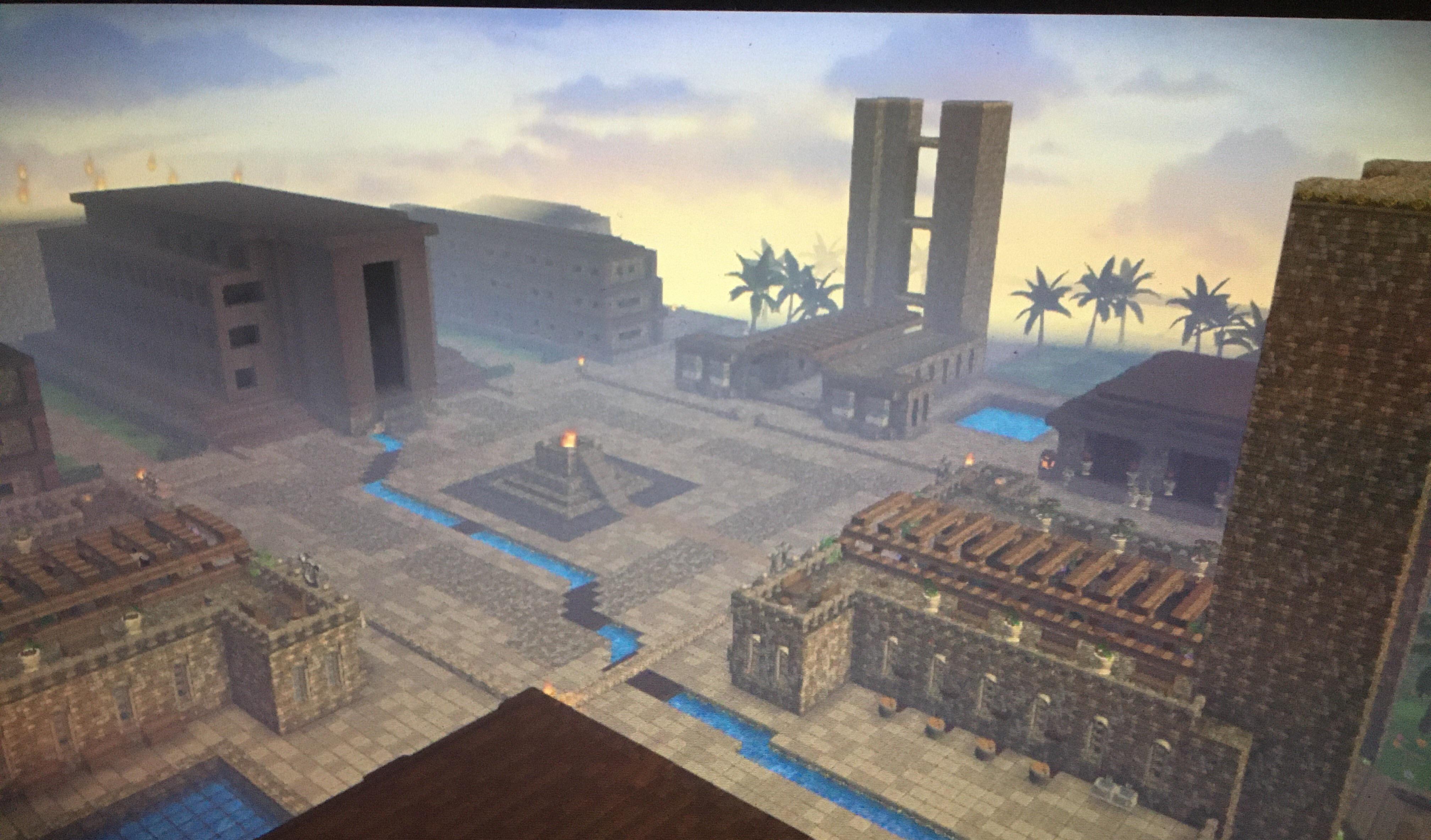 |
Sunday, September 11, 2022
Archaeology and the Utopian Temple of Ezekiel
Stephen Cook
Interaction with old and new archaeological discoveries is indispensable in understanding the utopian temple of Ezekiel 40–48. Numerous problems in interpreting the prophet’s vision of an ideal sanctuary complex trenchantly elude understanding, apart from archaeology’s mine of evidence. Included among the sites and finds especially helpful in elucidating Ezekiel’s intricate symbolic design are Sumerian cylinder seals; the Mari Investiture Panel; finds at Khirbet Qeiyafa, including temple models; the Ain Dara temple; ivories from Arslan Tash; the Tell Tayinat temples; the Arad temple, and; the Motza temple.
This talk will highlight selected examples of the use of this evidence in addressing key problems and interpretive issues in the study of Ezekiel’s utopian complex. After interaction with ancient finds, the formidable temple complex of Ezekiel emerges as a masterwork of symbolic architectonic design.
|
Stephen Cook is a Professor of Old Testament Language and Literature at the Virginia Theological Seminary.
|
|
|
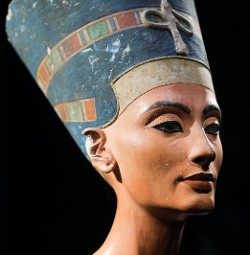 |
Sunday, October 16, 2022
Discoveries At Nefertiti's Sun Temple
Jacquelyn Williamson
Jay Adams Memorial Lecture
This event is sponsored by the DC chapter of ARCE (American Research Center in Egypt)
Stone relief fragments were recently excavated from Kom el-Nana at Tell el-Amarna in Egypt, the site of Nefertiti’s Sun Temple. They date to approximately 1350 B.C.E., the period when Pharaoh Akhenaten closed Egyptian temples and dismissed the priesthood, declared the sun deity Aten as the true God, and with his wife Nefertiti established a new capital of Egypt at Amarna.
|
|
In an illustrated presentation, Jacquelyn Williamson reconstructs the architecture, art, and inscriptions from the site to demonstrate Kom el-Nana is the location of Queen Nefertiti’s ‘Sunshade of Re’ Temple as well as another more enigmatic structure there that served the funerary needs of the non-royal courtiers at the ancient city.
The art and inscriptions provide new information about Queen Nefertiti and challenge assumptions about her role in Pharaoh Akhenaten’s religious movement dedicated to the sun god Aten.
Jacquelyn Williamson is Associate Professor of Art and Archaeology of the Ancient Mediterranean World at George Mason University.
This event will be held at Meaza Restaurant: 5700 Columbia Pike, Falls Church, VA 22041.
The luncheon begins at 2:00 PM; the lecture begins at 3:00 PM.
|
|
|
|
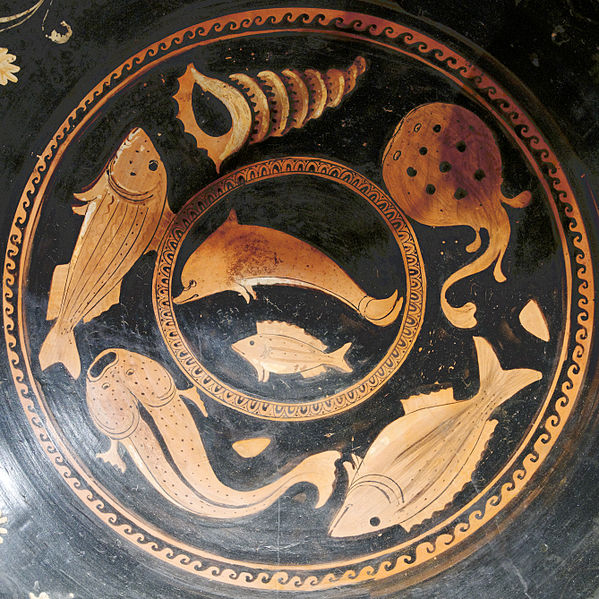 |
Sunday, November 13, 2022
20,000 Leagues Under The Wine-Dark Sea
Emily Egan
This event is sponsored by the Hellenic Society Prometheas
This presentation takes a deep “dive” into depictions of marine life in the art of Late Bronze Age Greece (ca. 1600–1100 BCE). Amid a survey of sea creatures, including octopods, dolphins, and fish, special attention is given to the enigmatic argonaut motif and its appearance in the wall paintings of the Mycenaean Palace of Nestor at Pylos
New research at the Palace of Nestor suggests that argonauts were not simple ornaments but powerful royal symbols, on par with more fearsome Aegean “totems” like lions and griffins. This lecture interrogates this new theory and the evidence that underpins it and also demonstrates how the painted forms of the creatures, when viewed closely, offer a rare insight into the thought processes and working methods of Greek Bronze Age artists.
Emily Egan is an Assistant Professor of Eastern Mediterranean Art and Archaeology at the University of Maryland.
This event will be at Yayla Bistro: 2201 N. Westmoreland Street, Arlington, VA 22213
The luncheon begins at 2:00 PM; the lecture begins at 3:00 PM.
|

|
|
|
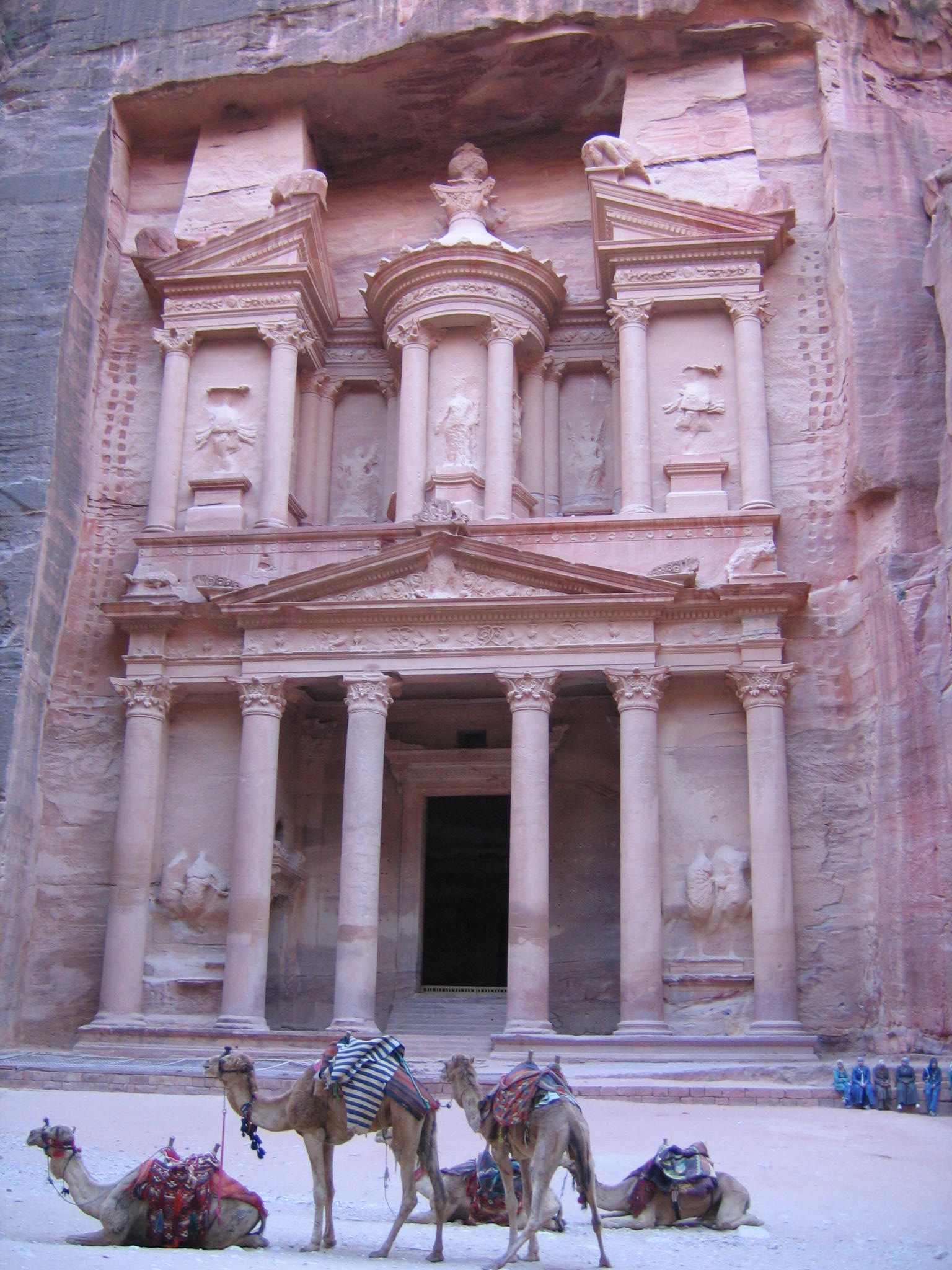 |
Sunday, January 22, 2023
Marvin Rogul Memorial Lecture
Petra and the Nabataeans
Barbara A. Porter
The Nabataean kingdom, at its zenith, controlled territory from Damascus in Syria to Hegra in northern Saudi Arabia, and its capital was Petra (ancient Raqmu) in southern Jordan. Nabataean sites— explored scientifically now for more than a century— provide insights into these ancient peoples who controlled the trade routes from southern Arabia and whose kings are known from the early second century BCE to 106 CE when the Roman rule took over.
An overview of the main Nabataean sites will be presented along with some ancient texts as well as recent archaeological discoveries. The new Petra Museum (inaugurated in the spring of 2019) will be featured given its signature objects from the Petra region and comprehensive presentation.
Dr. Barbara A. Porter was the director of the American Center of Oriental Research in Amman (ACOR) from 2006 to 2020. She is now an independent scholar in Washington, D.C.
|
|
|
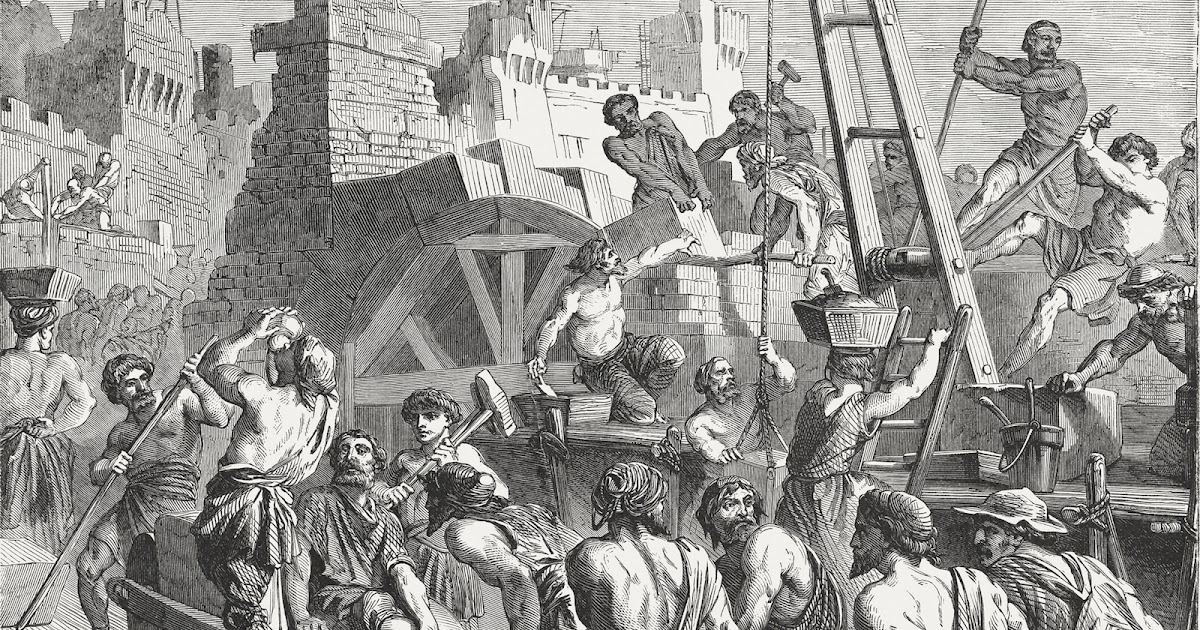 |
Sunday, February 26, 2023
Exile and Return: The Birth and Defining Moments of Ancient Judaism
John Ahn
Co-Hosted by BASONOVA, BAF, B'nai Israel Congregation and the Haberman Institute for Jewish Studies
What was the impact of involuntary and voluntary forced migration on Judaism, a diaspora religion? Without the historical experience of the exile and return, Judaism would not exist.
In the midst of political collapse and the annexation of the Southern Kingdom of Judah during the sixth century BCE, how did a kingless and kingdom-less people maintain authority and coherence? With the return of exiled Judahites from Babylon and those who fled to Egypt, plus others from smaller satellite nations like Moab, complications arose in articulating a post-exilic, “normative” Judaism.
|
A compromise was reached through the formulation of the final form of the Hebrew Bible. The text became the doctrinal constitution of a new state: defining laws, stipulations, and narratives with poems and other writings on post-exilic citizenship. Two seminal, opposing views dominated the conversation and redaction process: the orthodox/conservative (Persian Jews) and liberals (Egyptian Jews).
John Ahn is Associate Professor of Hebrew Bible, Howard University School of Divinity.
|
|
|
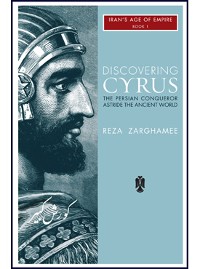 |
Sunday, March 26, 2023
Cultural Affinities and the Legacy of Cyrus the Great
Reza Zarghamee
Ancient Iranian-Elamite assimilation is a contentious subject of recent scholarship regarding the Achaemenid Persian Empire. Increasingly, scholars are focusing on the cultural debt that the early Persians owed to the Elamites.
Cyrus the Great (c. 600–530 BCE) stands at the center of this scholarly discourse, as several prominent historians have argued that the Persian imperial founder should be regarded either as an ethnic Elamite or as a Persian who self-identified as an Elamite for political purposes. The basis for this dispute rests in interpretations of his title, “King of Anshan,” and the origins of his name.
|
Without denying the importance of the Elamite cultural legacy, might caution be advised with respect to such Elamite-centric theories? Focusing on overlooked evidence, including that of a religious character, the presenter will demonstrate why the traditional view of Cyrus the Great as a fundamentally Persian king is likely correct.
Dr. Reza Zarghamee is the author of Discovering Cyrus: The Persian Conqueror Astride the Ancient World.
|
|
|
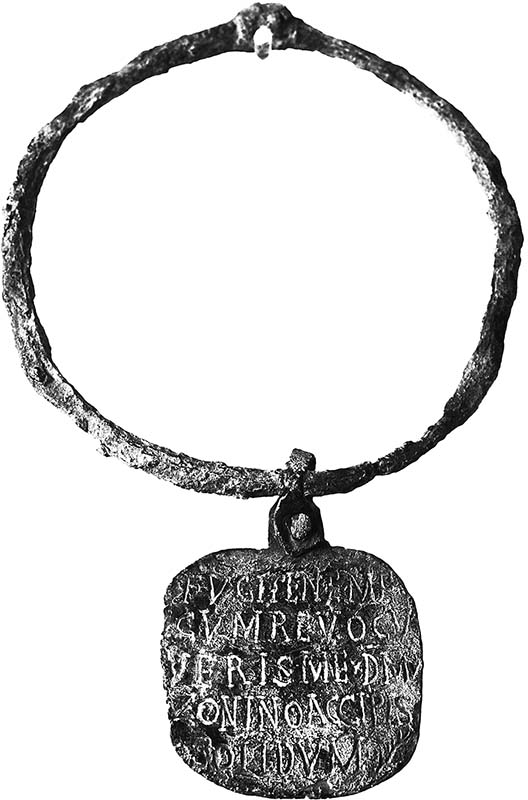 |
Sunday, April 23, 2023
Ancient Slavery and Early Christians
Katherine Wasdin
Slavery was an omnipresent part of life in the ancient Mediterranean. One of its most brutal artifacts is the Zoninus collar, a late antique Roman metal collar designed to be worn around the neck of an enslaved person. One such collar that survives to this day bears a tag that identifies the wearer as owned by Zoninus and is decorated with a palm frond, indicating that Zoninus was a Christian.
The Pauline Epistle of Philemon (one of the books of the Christian New Testament), which accompanies the escaped slave Onesimos as he is returned to his owner Philemon, attests to a worldview about slavery among the earliest Christians. In contrast to the spiritual liberation promised by the new Christian religion, those who find themselves in actual slavery are to remain there.
While slaves were seldom able to tell their own stories, scholars have increasingly examined our available evidence, like the Zoninus collar, to tease out their experiences. This talk will explore the legal and social impacts of slavery in ancient Greco-Roman society and then turn to the role of actual and metaphorical slavery in early Christianity.
Katherine Wasdin is an Associate Professor of Classics at the University of Maryland.
|
|
|
|
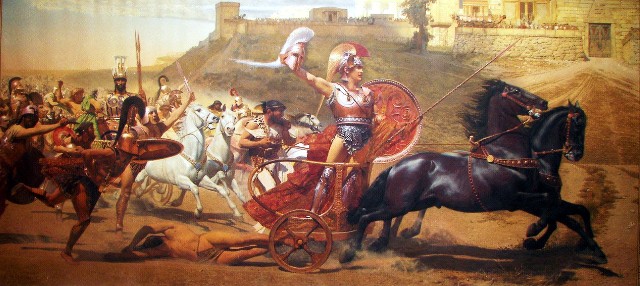 |
Sunday, May 21, 2023
Troy and the Trojan War: Did It Happen?
Eric Cline
Sponsored by the Hellenic Society Prometheas
Calamitous battles, breathtaking Helen, love-struck Paris, cuckolded Menelaus, and a giant wooden horse — Homer's famous tale of the Trojan War has fascinated humankind for centuries and has given rise to countless scholarly articles and books, extensive archaeological excavations, epic movies, television documentaries, stage plays, art and sculpture.
For more than a century, archaeologists and historians have struggled to answer questions about the Iliad, Homer’s magnificent tale. Did Troy really exist? Where was it located? Was there a Trojan War or is Homer’s tale simply a good yarn? Is there any historical truth in a face that launched a thousand ships or was there simply a ten-year struggle for political hegemony in the Aegean?
This fully illustrated lecture will present the thesis, based upon the latest archaeological and textual discoveries, that a Trojan War, or several such wars, did indeed take place during the Late Bronze Age. Although many questions remain that have ignited scholarly controversies and even most-unscholarly fistfights, one can conclude without a doubt that there is a kernel of truth in Homer’s story.
Eric Cline is Professor of Classical and Ancient Near Eastern Studies and Anthropology at George Washington University.
|
|
|
|
 |
Sunday, September 12, 2023
The Odyssey of Homer: Origins & Themes
Lillian Doherty
The circumstances of composition of the Homeric Odyssey are famously uncertain; but the poem itself includes many tantalizing clues to its origins and development.
From the connections with Athens, where the hero’s divine patron Athena and his enemy Poseidon were both important deities; to the focus on sea voyages typical of the Greek age of exploration and colonization; to the echoes of the Trojan War and its Mycenaean context, and finally; to the inclusion of older international tales such as the Homecoming Husband, Dr. Doherty will trace in reverse chronological sequence some of the historical layers that went into the composition of this famous epic.
Lillian Doherty is Emerita Professor of Classics, University of Maryland.
|
|
|
|
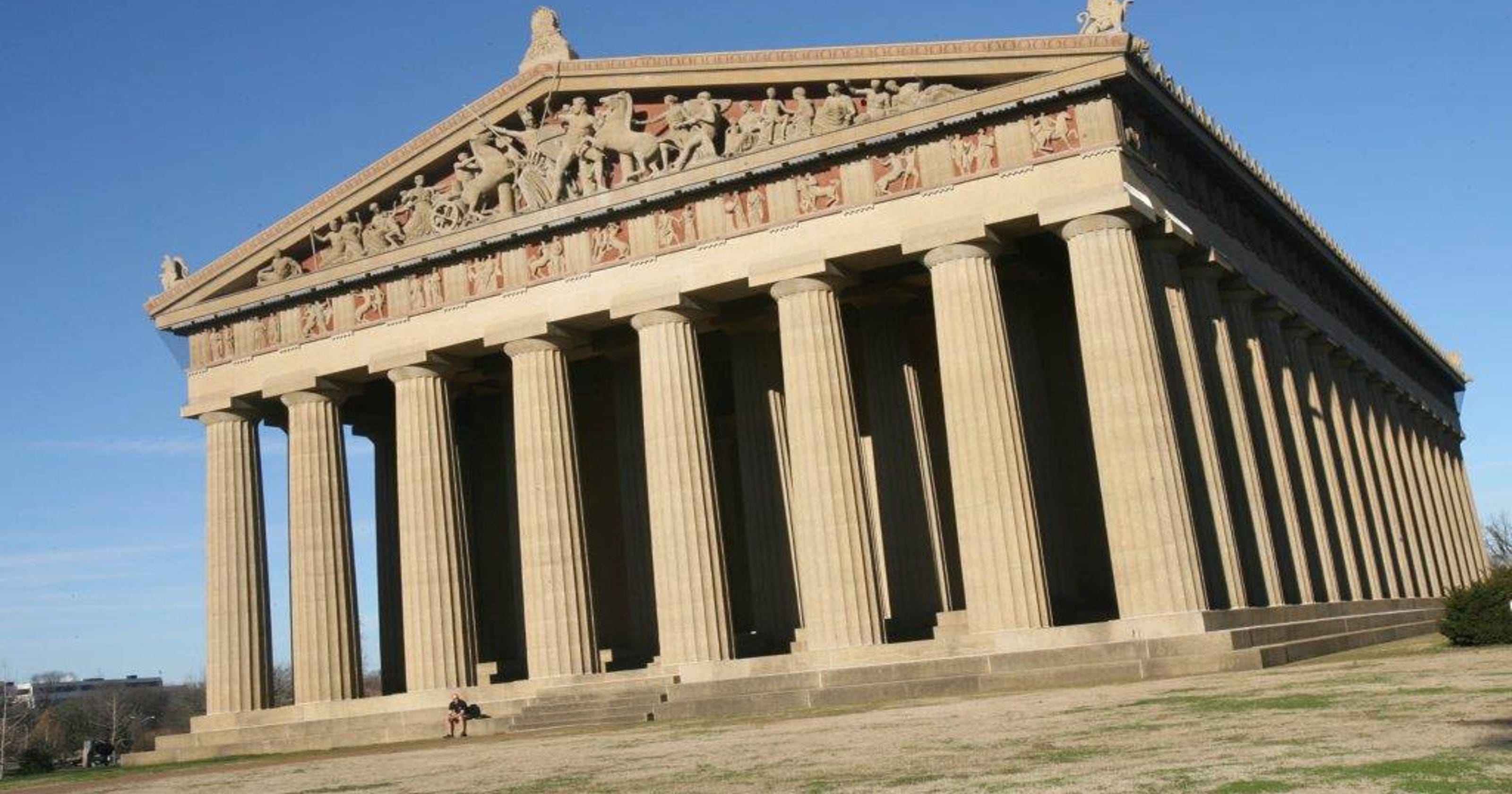 |
Sunday, November 19, 2023
New Views on an Old Temple: The Parthenon and Its Decoration
Jenifer Neils
Sponsored by the Hellenic Society Prometheas
The Parthenon on the Athenian Acropolis is perhaps the most readily recognizable building in the world, and during the past two millennia our understanding of it and its sculptural decoration has continued to evolve.
This lecture will examine some of these changing interpretations and how they are – or are not – related to the cultural, social and political context of 5th-century BCE Athens. Primarily a lavish marble temple dedicated to the patron goddess of Athens, the Parthenon is also a civic monument celebrating the democratic state’s victories in war, the valor of its heroes, the beauty of its citizenry, and even the status of its women.
Jenifer Neils is Emerita Professor, Case Western University and former Director of the American School of Classical Studies at Athens.
|
|
|
 |
Sunday, January 21, 2024
Recent Top Discoveries in Biblical Archaeology
Glenn Corbett
Sue Laden Commemorative Lecture
What stories are making headlines in the world of biblical archaeology? What exciting discoveries in Israel, Jordan, and beyond are changing the ways that archaeologists and textual scholars view the biblical past?
This lecture, explores some of the top biblical archaeology finds and stories from the past few years, from groundbreaking new methods for dating biblical battles to the controversial Mt. Ebal tablet that claims to be the earliest Hebrew inscription.
Find out which discovery tops the list AND get a sneak peek at some of the fascinating and thought-provoking articles being prepared this coming year for BAR (Biblical Archaeology Review).
Glenn Corbett is Editor-in Chief of BAR Magazine.
|
|
|
|
|
|

|
Sunday, February 25, 2024 at 2 pm
Glitter & Gold, Books & Buildings: Female Patrons in the Art of Late Antiquity
Heidi Gearhart
As Christianity spread throughout the former Roman Empire in the third, fourth, and fifth centuries CE, new kinds of art were needed for the performance and practice of a new religion.
This period is one of great diversity, as in many places pagans, Christians, and Jews lived in close proximity to one another. As a result of this proximity, late antique art is witness to a rich mixing of cultural traditions.
This is also a period when many patrons of art were women. These female patrons built new churches, commissioned books, and established religious and social institutions. This lecture will look at the spectacular works made under the patronage of women in Late Antiquity and the early Byzantine era, from the reign of Constantine in the fourth century, to that of the legendary Theodora, wife of the Emperor Justinian, in the sixth.
Heidi Gearhart is Associate Professor of Art History at George Mason University.
|
|
|
|
|
 |
Sunday, March 24, 2024
The Fall of Roman Britain
Samuel Collins
The last fifteen years have witnessed a sea change in how historians understand the end of Roman rule in Britain. This Roman state failed more dramatically and more precipitously than elsewhere in the fifth-century west, but exactly what happened in the final phase of the Roman imperial project in Britain has remained stubbornly obscure and contested.
Driven by impressive recent archaeology, a new scholarly consensus has begun to emerge about the history of the end of Roman control in Britain. This evolving new history is a more radical departure from the old master narrative than for any other portion of the western Roman Empire in the long and difficult fifth century.
|
In this lecture we will survey what is afoot in the study of late and post-Roman Britain, and consider how new perspectives on the end of Roman Britain can help us productively to reframe broader questions about the fall of the Western Roman Empire.
Samuel Collins is Associate Professor of History at George Mason University
|
|
|
 |
Sunday, April 14, 2024
From Washington’s Rome to Jackson’s Athens: Federal Greek Revival Architecture in D.C.
Elise Friedland
Diane Harris Cline Memorial Lecture
America's Founding Fathers initially looked to Rome for political as well as architectual inspiration. Just decades into the great political experiement, however, politicians turned away from Roman Republicanism and toward Greek democracy created in the fifth-century BCE Athens.
This lecture details how federal architecture followed this shift in early American thought. It surveys the "second wave of federal building" in D.C. and demonstrates how the successors of our Founders and their architects not only monumentalized, but also "Hellenized" the capital city. To ensure that D.C.'s architectural landscape evoked classical Athens, they created a one-mile-long "axis of Greek Revival" buildings for the Executive Branch of government along F Street that stretched from the President's House to Judiciary Square.
By echoing some of the most-renowned buildings of ancient Greece in early nineteenth century Washington, the (presidential) patrons and their architects sought to communicate the permanence, power, cultural stature and democratic ideals of young America.
Elise Friedland is Associate Professor of Classics and Art History at George Washington University
|
|
|
|
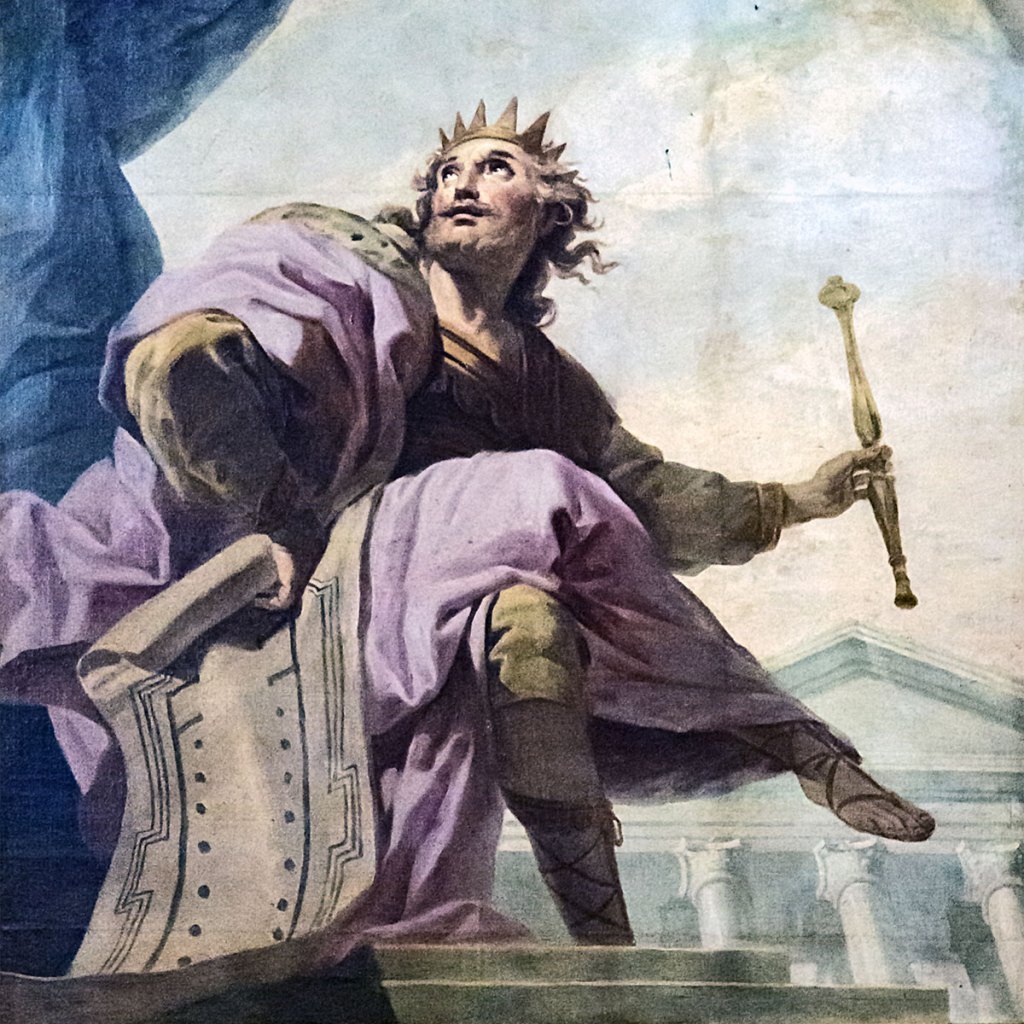 |
Sunday, May 19, 2024 at 7:30 PM at B’nai Israel
After 1177 BCE: The Survival of Civilizations
Eric Cline
In the years after 1177 BCE, many of the Late Bronze Age civilizations of the Aegean and Eastern Mediterranean lay in ruins, undone by invasion, revolt, natural disasters, famine, and the demise of international trade. An interconnected world that had boasted major empires and societies, relative peace, robust commerce, and monumental architecture was lost.
After 1177 BCE will trace the compelling story of what happened during the next four centuries across the Aegean and Eastern Mediterranean world. It is a story of resilience, transformation, and success, as well as failures, in an age of chaos and reconfiguration. Those that failed to adjust disappeared from the world stage, while others transformed themselves, resulting in a new world order that included Israelites, Philistines, Phoenicians, Neo-Hittites, Neo-Assyrians, Neo-Babylonians, and world-changing innovations such as the use of iron and the alphabet.
It is now clear that this period, far from being the First Dark Age, was a new age with— new inventions, new opportunities, and lessons for us today.
Eric Cline is Professor of Classical and Ancient Near Eastern Studies at George Washington University.
|
|
|
|
 |
Wednesday, June 19 at 8 pm Eastern via Zoom
The Trojan War: The Epic in Art
Renee Gondek
One of the most famous epic narratives of classical mythology is that of the Trojan War, a decade-long conflict over the possession of Helen, the most beautiful women in the world.
Pitting Greeks against Trojans, the war featured countless heroes like Achilles and Odysseus, and it was integral both to the psyche of the ancient Greeks and to the mythical foundation of the ancient Romans.
|
Our speaker recounts the story of the Trojan War and explores and weaves together multiple (and sometimes conflicting) strands of evidence from many periods of antiquity. She narrates passages from ancient literary sources including Homer’s Iliad (ca. 750 BCE) and Apollodouras’ Bibliotheca (ca. 100 CE) and illustrates the program with important artistic works, such as the famous Sarpeon Krater by Euphronios and the Laocoon Group in the Vatican museums.
Later representations of the Trojan War are also highlighted, such as Peter Paul Rubens’ Judgment of Paris and Nicolas Poussin’s Achilles Discovered on Skyros.
|
|
|
 |
Wednesday, July 10, 2024 at 8 PM via Zoom
Reading the Skies: The Origin and Development of Astronomy in Ancient Mesopotamia
Gil Breger
The earliest records of a systematic inquiry into the skies hail from ancient Mesopotamia. From as early as the 2nd millennium BCE and continuing all the way to the beginning of the Common Era, scribes writing in cuneiform script on clay tablets produced texts describing eclipse patterns, lunar phases, planetary motion, and more.
While many texts are couched in a divinatory framework, others demonstrate an empirical attitude. During its two-millennia-long existence, astronomy in ancient Mesopotamia took on many faces, with older forms of astronomy co-existing alongside newer, arguably contradictory (from a modern perspective) forms of astronomy.
In this lecture, we will trace the origin of astronomy and explore its development in ancient Mesopotamia. We will examine the various roles it played in ancient society and its legacy in Greek and later astronomical traditions
Gil Breger teaches at the University of California at Berkeley.
|
|
|
|
 |
Sunday, September 8, 2024
A History of Death in the Hebrew Bible
Matthew Suriano
The descriptions of death and burial in the Hebrew Bible are brief and ambiguous. Portrayals of postmortem existence are also enigmatic, seemingly contradictory and not fixed during First and Second Temple times.
The Psalms often depict the dead as residing in Sheol, a dark and dreary place: tomb-like. Passages in Genesis and Ecclesiastes imply that Sheol is the common fate of all people regardless of whether they were righteous or unrighteous. While Sheol is mentioned sixty-six times in the Hebrew Bible, it is never clear whether it is a final resting place; the prophet Samuel is recalled from death by King Saul.
A tomb also holds positive connotations in biblical literature. An ideal death involved being “gathered to one’s kin” and buried inside the family tomb. Burial practices also changed over time. The excavation of Iron Age tombs from Judah show that the dead received two burials: an initial interment when the body was brought to the tomb, and; a secondary burial when their bones were transferred to a repository of family bones stored inside the tomb.
Matthew Suriano - Associate Professor, Joseph and Rebecca Meyerhoff Program and Center for Jewish Studies at the University of Maryland.
|
|
|
|
–
 |
Sunday, October 6, 2024
A Trio of 3rd Century Early Christian Inscriptions in Greek from Biblical Armageddon
Christopher Rollston
Spnsored by the Hellenic Society Prometheas
On occasion, ancient inscriptions with some very dramatic content will come to light, and with three recently excavated Megiddo Mosaic inscriptions we have just such a case!
One of these inscriptions, commissioned by a prominent woman named "Akeptous," includes this stunning sequence of words: “God Jesus Christ." Another of these inscriptions contains a command to "remember" four prominent women: "Primilla, Kuriake, Dorothea, and Chreste." Finally, one of these inscriptions refers to a Roman centurion named "Gaianus" (Greek: "Porphyrius") as the prominent benefactor who made the donation for the mosaic.
This mosaic inscription also includes a medallion with two fish (reminiscent of "the loaves and fishes" miracle or the famed Early Christian symbol acronym IXTHUS, or both). These mosaic inscriptions have been removed from the ground, are currently being conserved, and will be exhibited at various museums (including in Washington, DC) before being returned to Megiddo.
Christopher Rollston - Professor of Northwest Semitic Languages and Literatures at George Washington University
|
|
|
|
 |
Sunday, November 17, 2024
The Amarna Letters: A One-Day Symposium
George Washington University Gelman Library, B108
2130 H Street Northwest Washington, DC 20052
BASONOVA is co-promoting a one-day, de Bragança endowed symposium, dedicated to the Amarna Letters, presented by the GWU Capital Archaeological Institute and the Department of Classical and Ancient Near Eastern Languages and Civilizations at the George Washington University.
The Amarna Letters, a collection of diplomatic correspondence excavated in Egypt and written in the 14th century BCE, provides a unique glimpse into the political landscape of the ancient Near East. Scholars from around the globe will present their latest research on these significant texts.
10:00 AM - 10:15 AM Eric Cline, George Washington University
Welcome and Introduction to the Amarna Period and Letters
10:15 AM - 11:00 AM Ellen Morris, Barnard College
Was Akhenaten's Foreign Policy Heretical?
11:00 AM - 11:45 AM Francesco De Magistris, University of Lausanne
Egyptian Administration in the Levant of the Amarna Letters: Functions, Time, and Space
11:45 AM - 12:30 PM Federico Zangani, University of Cambridge
The Amarna Letters as Evidence for Ancient Globalization
1:30 PM - 2:15 PM Alice Mandell, Johns Hopkins University
The Canaanite Amarna Scribes and Their Letter Craft
2:15 PM - 3:00 PM Jana Myná?ová, Charles University
From Amarna With Love: Investigating the Origin and Context of the Amarna Greeting Formula (In-person only)
3:00 PM - 3:45 PM Jacob Lauinger, Johns Hopkins University
“Seven Times and Seven Times, on the Belly and on the Back”: Prostration and the Performance of Identity in the Letters of Client Kings to the Pharaoh (In-person only)
3:45 PM - 4:00 PM Chris Rollston, George Washington University
Concluding Remarks
Evening Lecture
6:00 PM - 7:30 PM Amanda Podany, Professor Emeritus California State Polytechnic University, Pomona
Securing Peace in the Ancient Middle East: Diplomacy in the 14th Century BCE
|
|
|
|
 |
Sunday, January 26, 2025
Emergence of the Israelites: Transition From a Village Perspective
J.P. Dessel
This presentation will review the evidence for rural elites in Iron Age I and the implications that has for understanding the emergence of the Israelites.
Our understanding of the rural hinterland in the Late Bronze and Iron Ages of Israel is poor, at best. It is assumed that rural villages are closely tied to nearby urban city-state and had little agency or impact on events like the emergence of ancient Israel.
Unfortunately, due to the limited excavation of village sites, archaeological traces of rural elites have been very elusive.
Based on the excavation of sites like Tell ‘Ein Zippori and Tell el-Wawiyat, in the Lower Galilee, however, such multi-period villages offer compelling evidence for a deeply rooted rural population with its own potentially independent social and political organization. In particular, Tell ‘Ein Zippori displays an unforeseen sense of rural complexity that suggest the presence of rural elites, a group known from textual sources such as the Hebrew Bible and Ugaritic texts.
J.P. Dessel is the Steinfeld Professor of Near Eastern Archaeology in the Department of History at the University of Tennessee, Knoxville
|
|
|
|
 |
Sunday, February 23, 2025
Christianity in Rough Cilicia
Jaime Gunderson – University of Pittsburgh
After the division of the Roman Empire in the fourth century C.E., Cilicia became part of the Byzantine Empire. Cilicia was one of the most important regions of the classical world and which some scholars consider as the birthplace of Christianity.
This presentation examines narratives of "Christianization" in Roman "Rough Cilicia" based on archaeological evidence from Christian spaces at Antiochia ad Cragum, Selinus, Nefelis, Anemurium, and Elaiussa Sebaste.
There were diverse ways in which local communities adopted Christian practice and wove the emerging religion into the fabrics of their respective communities. Accordingly, this presentation pushes back on universal and generalizing narratives of the spread of Christianity across the Roman Empire.
|
|
|
|
 |
Sunday, March 30, 2025 at 7:30 pm
Josephus’s Masada Story: Martyrs, Murders, and Myth
Jonathan Klawans – Boston University
The story of mass suicide at Masada has been told by our only contemporary source, Josephus, the first-century Jewish historian, priest, autobiographer and general. Although his histories may have been written, at least in part, for a Roman audience, this presentation evaluates the story in the context of ancient Jewish sectarianism and nationalism.
The validity of the story in light of Josephus’s biases and motivations will be probed, and taken into consideration will be the attitudes toward suicide and martyrdom as articulated by Josephus and other ancient Jewish sources.
Also explored will be the meanings the story has taken on in contemporary Israeli history and culture with comparisons to some more recent stories of tragic mass suicide.
Sponsored by B’nai Israel Congregation, The Haberman Institute for Jewish Studies, BAF, and BASONOVA.
This event will be held at B’nai Israel: 6301 Montrose Road / Rockville / MD 20852
No reservations needed: $10 cash or check at the door (No charge B'nai Israel and BAF Members)
|
|
|
|
|